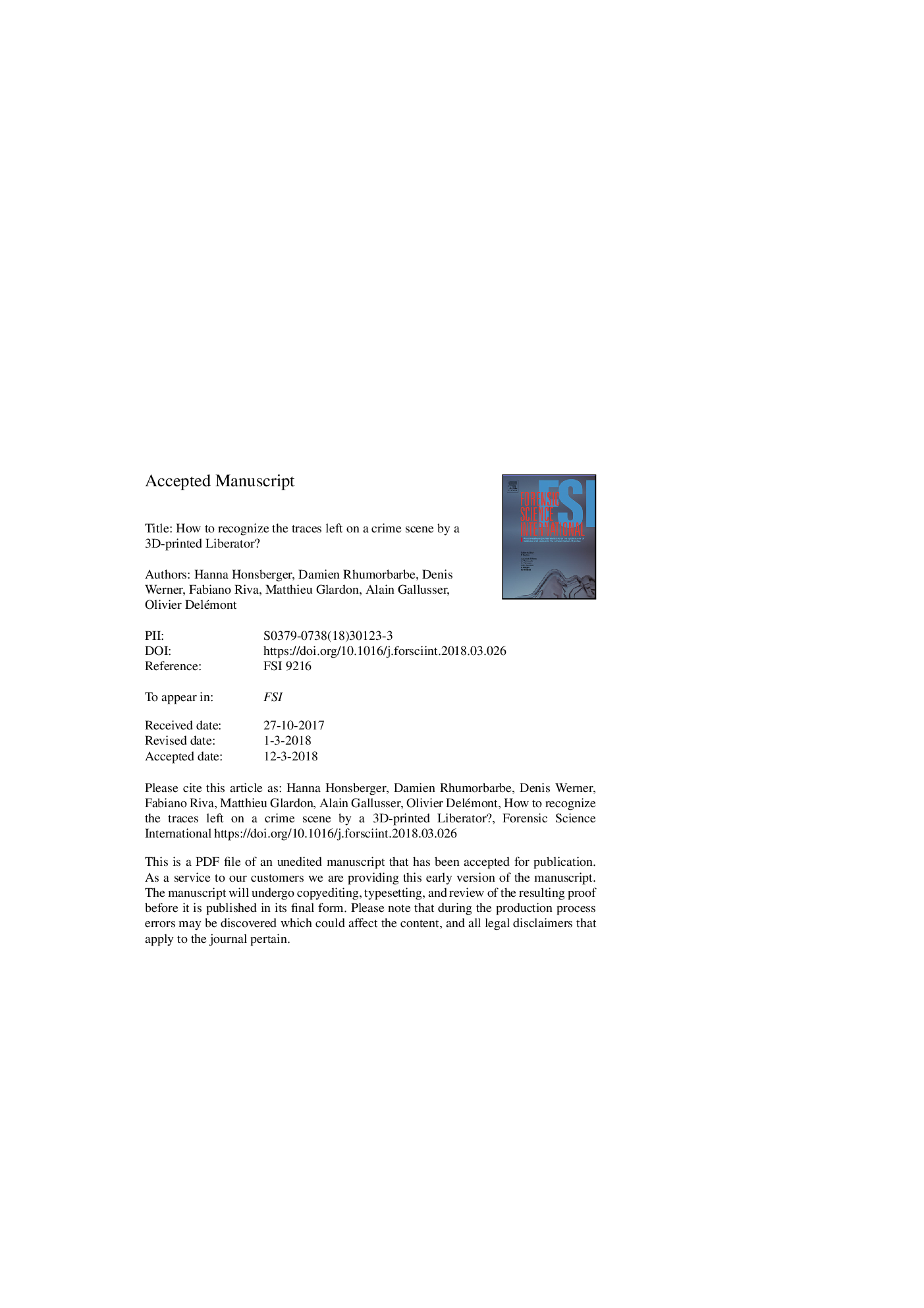| Article ID | Journal | Published Year | Pages | File Type |
|---|---|---|---|---|
| 6551135 | Forensic Science International | 2018 | 19 Pages |
Abstract
The results showed that the barrel tended to break between the ignition of the primer and the moment the projectile exited the muzzle. The speed of the projectiles reached 140Â m/s when the barrel broke, while it was about 170Â m/s when barrel remained intact. The trajectory of the projectiles was sometimes disrupted, and the projectile tumbled on itself. It was thus very difficult to characterize the trajectory. The cavity wound caused by the fastest bullet was typical of a handgun wound firing a FMJ projectile (penetration of 21Â cm in ballistics soap). On the other hand, the cavity caused by the slowest bullet was more representative of a splinter wound (penetration of 14Â cm in ballistics soap). The study of gunshot residues collected on adhesive targets showed the presence of unburnt particles and small perforations caused by polymer pieces that concentrated around the entry holes.
Keywords
Related Topics
Physical Sciences and Engineering
Chemistry
Analytical Chemistry
Authors
Hanna Honsberger, Damien Rhumorbarbe, Denis Werner, Fabiano Riva, Matthieu Glardon, Alain Gallusser, Olivier Delémont,
